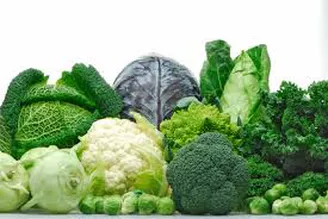Cruciferous vegetables contain valuable nutrients that are converted into cancer-fighting isothiocyanates (ITCs) when blended or chewed in their raw state.
This conversion can ONLY happen if you blend or chew them first in their uncooked raw state. After you blend your cruciferous veggies, you can cook them if you like.
If you skip blending or chewing in their raw state before you cook them, you will not get these cancer fighting benefits because cooking destroys the enzyme that drives this nutrient conversion.
Studies have shown that eating ITC-rich cruciferous vegetables protects against cancer:
-
One serving per day of cruciferous vegetables reduced the risk of breast cancerby over 50%.
-
One or more servings of cabbage per week reduced risk of pancreatic cancerby 38%.
A Few Ways You Can Include Cruciferous Veggies In Your Diet
1. I have found that green smoothies are the quickest and easiest way to include raw green cruciferous veggies into my diet.
2. You can also add blended cruciferous veggies to home-made chili or vegetable soup. It doesn’t change the taste, it just makes it a little thicker.
3. Fresh green vegetable juice is also another excellent way to “chew” your greens. And juicing contains more nutrients per ounce than blending.
List of Cruciferous Vegetables
- Arugula
- Bok choy
- Broccoli
- Brussels sprouts
- Cabbage
- Cauliflower
- Chinese cabbage
- Collard greens
- Daikon radish
- Kale
- Kohlrabi
- Mustard greens
- Radish
- Rutabaga
- Turnip
- Watercress
All the best to your health!

Catherine Rudolph, CNC
Certified Nutrition Consultant
FoodsThatHealYou.com
References
USDA Table of Nutrient Retention Factors Release 6. Nutrient Data Laboratory, Beltsville Human Nutrition Research Center (BHNRC), Agricultural Research Service (ARS), U.S. Department of Agriculture (USDA). 2007.
Yuan GF, Sun B, Yuan J, Wang QM. Effects of different cooking methods on health-promoting compounds of broccoli. J Zhejiang Univ Sci B 2009, 10:580-588.

